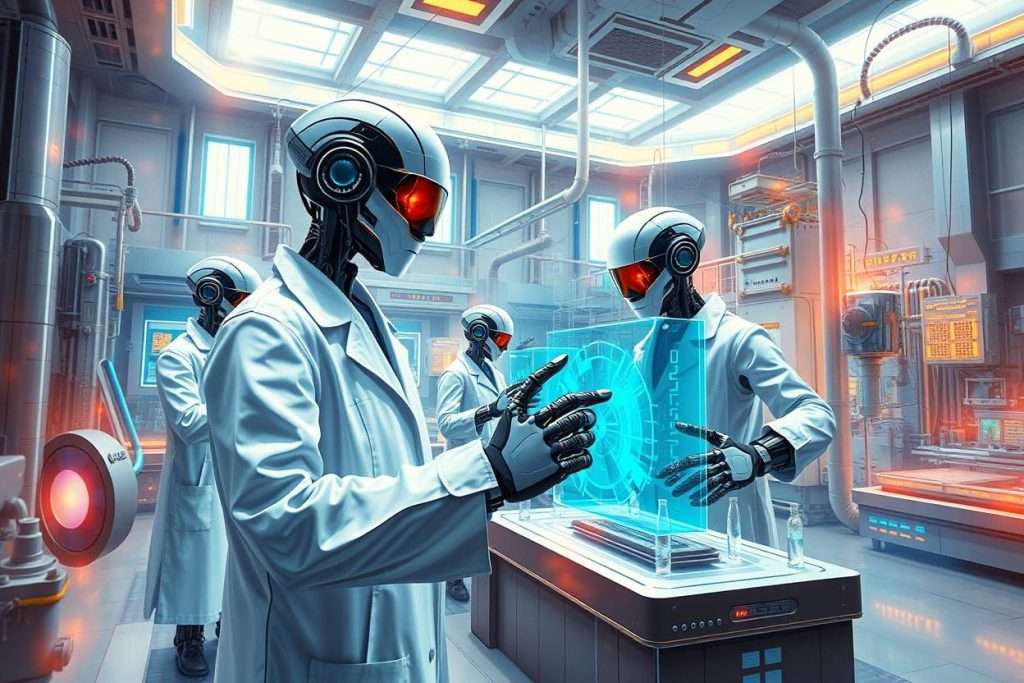Accelerating Innovation: How AI Is Reshaping Scientific Simulation and Modeling

Scientific breakthroughs don’t just happen: they’re built, tested, and fine-tuned through countless iterations of simulation. For decades, engineers have relied on physics-based models to bring ideas to life, from supersonic jets to next-gen electric vehicles and renewable energy systems. These simulations are the silent workhorses behind some of the world’s most advanced technologies.
But there’s a catch: traditional simulations are slow, expensive, and often limited by the raw computing power they demand. They struggle to keep pace with the growing complexity of modern engineering challenges.
Key Takeaways:
- AI is reshaping scientific simulation, making it faster, more scalable, and capable of handling complex real-world systems that traditional methods struggle with.
- Traditional simulations are slow and resource-intensive, limiting rapid innovation in industries like aerospace and automotive.
- AI techniques like surrogate models and physics-informed neural networks (PINNs) dramatically accelerate simulations while preserving physical accuracy.
- Hybrid models combine AI speed with physics-based precision, allowing fast iteration during design and reliable validation at critical stages.
- AI-driven simulation delivers strategic advantages—faster time-to-market, lower costs, deeper design exploration, and better sustainability outcomes.
That’s where artificial intelligence steps in. AI is no longer just a buzzword, it’s a transformative tool that’s changing the rules of the game. By learning from data and accelerating physics-based workflows, AI is enabling researchers to model the un-modellable, iterate in real time, and unlock insights that were once buried beneath layers of computational limits. In industries like aerospace, automotive, and energy, this shift isn’t theoretical. It’s already happening, and it’s redefining what innovation looks like.
Traditional Simulation: The Bottlenecks of Complexity
Before diving into the transformative role of AI, it’s important to understand the limits of classical simulation techniques. Engineers typically rely on methods like Finite Element Analysis (FEA), Computational Fluid Dynamics (CFD), and Multibody Dynamics (MBD) to evaluate how products behave under real-world forces. These tools simulate heat, stress, motion, and other physical phenomena using fundamental equations of physics.
While incredibly powerful, these methods are computationally expensive. Large-scale simulations often require supercomputing resources and can take days—or even weeks—to complete. In design-heavy industries, that delay constrains innovation. Running multiple simulations across hundreds of design variants simply isn’t practical. Moreover, optimization is extremely difficult without simplified surrogate models or reduced-order approaches.
This is where AI is changing the game.
AI Enters the Simulation Arena
Artificial intelligence, particularly machine learning (ML), brings a radically different approach to modeling. Rather than solving physical equations from scratch every time, AI learns patterns and relationships from existing data, be it simulation results, sensor inputs, or experimental measurements. Once trained, AI models can make predictions orders of magnitude faster than traditional solvers.
Techniques like deep learning, Gaussian processes, and reinforcement learning are increasingly used to create surrogate models—fast approximations of complex physical systems. These models aren’t just quicker; they also open the door to deeper design exploration, real-time simulation, and adaptive system optimization.
Another breakthrough comes from physics-informed neural networks (PINNs). These models blend the laws of physics directly into AI architectures, ensuring results remain grounded in known scientific principles while benefiting from the flexibility and speed of machine learning.
The combination of domain knowledge and data-driven learning is what makes AI physics so powerful.
Real-World Applications Across Industries

From aircraft design to clean energy systems, AI-driven simulation is making a tangible impact across some of the world’s most advanced and demanding industries.
Aerospace
AI is transforming aerospace design by drastically reducing simulation times. Instead of running time-consuming CFD models, engineers now use AI to predict aerodynamic performance and thermal stress across thousands of configurations in minutes. AI also powers digital twins—real-time virtual models of aircraft systems used to monitor structural health and optimize operations.
Automotive
In the automotive sector, AI enhances safety and efficiency by accelerating crash simulations and battery design. Predictive models streamline crashworthiness testing and enable rapid exploration of material changes. For electric vehicles, AI helps forecast thermal behavior, degradation, and charging performance, supporting better range and reliability.
Energy
AI optimizes energy infrastructure by improving wind turbine placement, forecasting solar output, and refining subsurface modeling. In oil, gas, and geothermal, machine learning interprets seismic data and reservoir behavior, enabling faster, data-driven decisions in complex environments.
Hybrid Models: The Best of Both Worlds
While AI-only models offer speed and flexibility, combining them with traditional physics-based models yields even greater accuracy and reliability. These hybrid models retain the scientific rigor of physical laws while improving efficiency with AI’s pattern-recognition capabilities.
For example, a CFD model may simulate airflow over an aircraft wing with high fidelity, but it’s computationally heavy. Engineers can train a neural network on CFD output to produce a fast-running surrogate that approximates the results in real time. When used together, the AI model supports early design screening, while the CFD model validates final designs.
This hybrid approach ensures engineers get trustworthy results quickly—a crucial balance in regulated, safety-critical industries.
Strategic Benefits of AI-Driven Simulation
AI-enhanced simulations don’t just make engineering faster—they reshape the entire innovation pipeline. Here are a few strategic advantages:
- Faster time-to-market: Products move from concept to prototype in a fraction of the time.
- Reduced costs: AI lowers the need for high-performance computing and extensive physical testing.
- Broader design exploration: Engineers can evaluate thousands of configurations and identify optimal solutions early in development.
- Improved sustainability: Lighter, more efficient products reduce material usage and emissions.
These benefits are especially valuable in sectors facing sustainability mandates, competitive pressures, and resource constraints.
Conclusion
AI is not replacing the laws of physics—it’s augmenting them. By fusing deep scientific knowledge with machine intelligence, AI is enabling a new era of simulation that is faster, smarter, and more scalable than ever before.
Across aerospace, automotive, and energy, organizations are already seeing how AI physics reshapes what’s possible. As tools and techniques mature, the question for innovators isn’t whether to embrace AI, it’s how fast they can do it to stay ahead.




